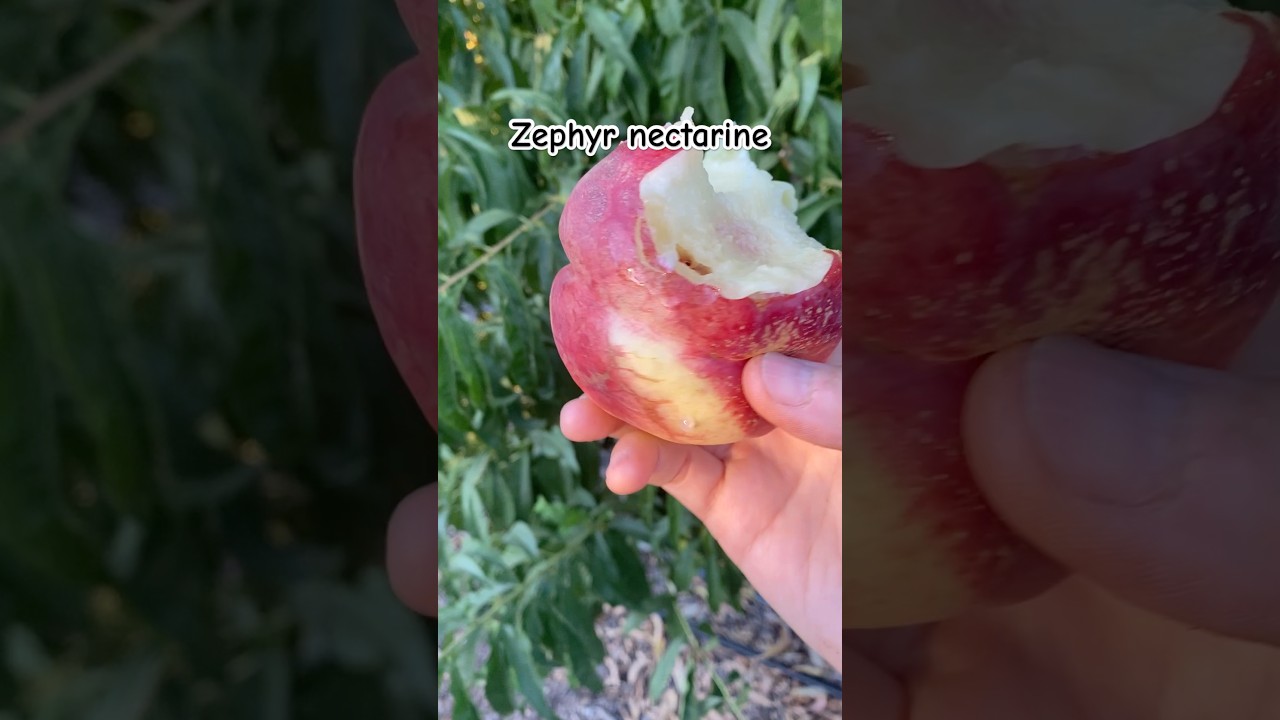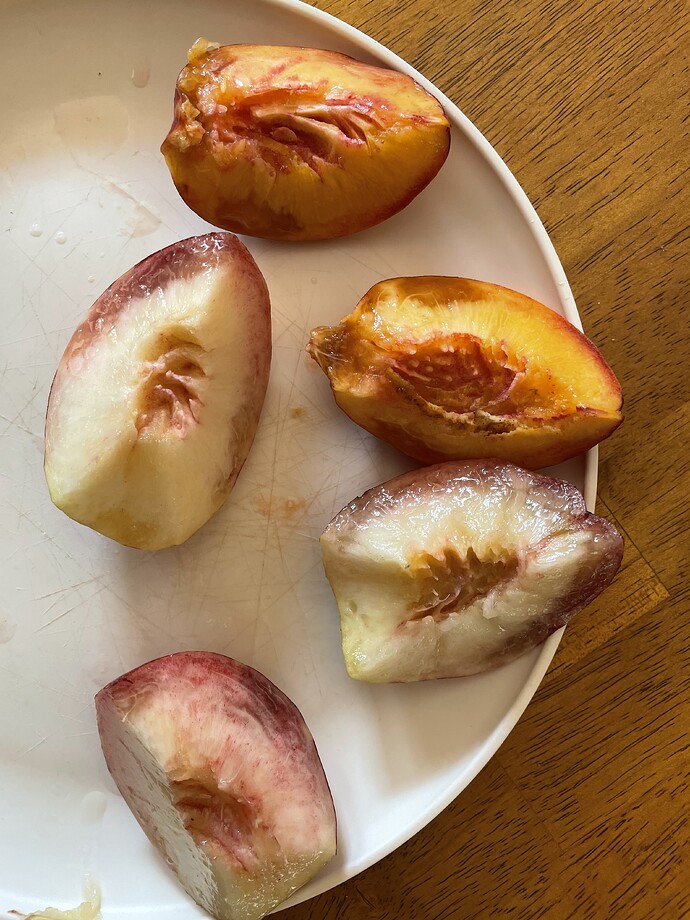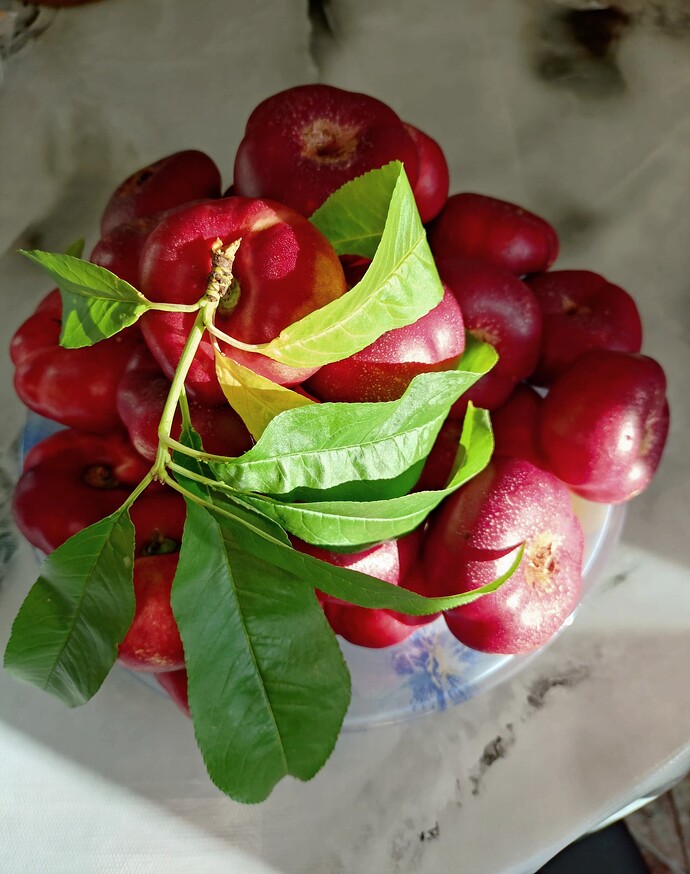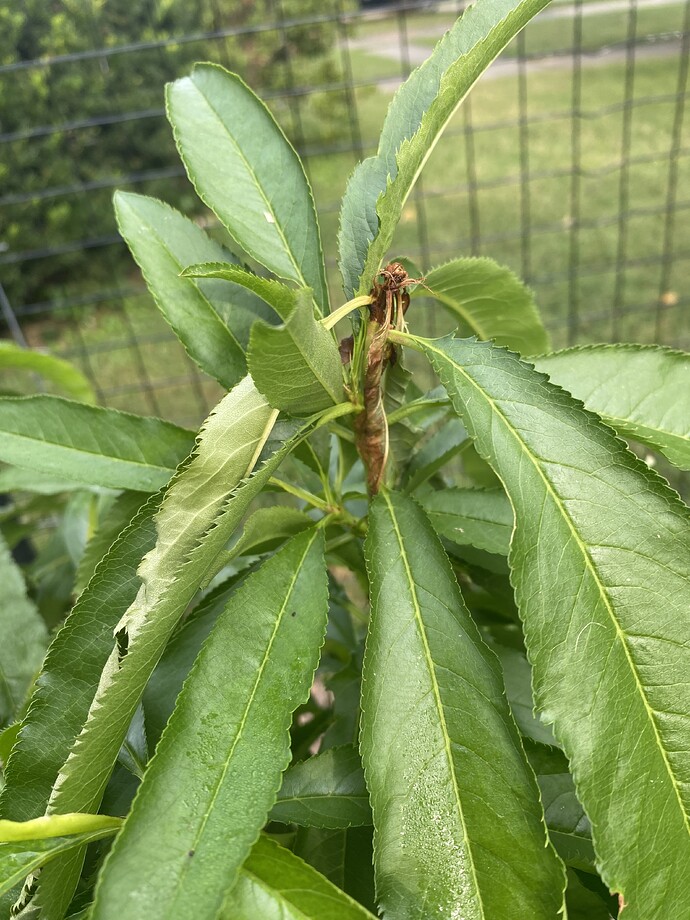This year I picked Arctic Sweet from July 30-Aug 13, and Emerauade started Aug 6, firm ripe, still picking it. Zephyr is expected to start end of Aug (last year I picked it from Aug 27-Sep 13).
I probably prefer a bit softer ripe. Will use your timeline with a bit of adjustment for me. Thank you.
I like soft ripe too, but my wife prefers firm. So, I pick half and half. Just picked a small, ugly Emeruade that had excellent sweetness and flavor. I also started picking Arctic Jay on Aug 10, firm ripe, and yesterday started picking soft ripe ones.
Arctic Jay so far is the sweetest, but Emeruade, Arctic Sweet, Diamond Ray and Candy Sprinkles have more flavor. Honestly, all are very enjoyable!
I don’t like the fuzz either if it’s thick. But unless the peach is really soft it can be rubbed off. Twist half the fruit at a time in a towel or similar.
Steve, Have you tried Emeruade and Arctic Sweet? They match your flavor preferences.
I’ve tried both. All the Arctic series are very sweet and good fruits. But the Honey series have more flavor in my conditions.
I agree, same here with at least Honey Kist, my best performer in that family. But I like the change, over eating the same thing all the time ![]() .
.
Now I understand why you think nectarines are better if you eat the peaches with the fuzzy skin… ![]()
I always peel the skin, even the nectarines. I haven’t tried many nectarines but some peaches I grow are definitely better than most nectarines, flavor wise.
I only grow arctic star and sauzee king nectarines. Sauzee King tastes good but cracks a lot so finally I will replace it with a donut peach. Arctic Star is good but birds are crazy for the bright red fruit.
I tried Costco bought Honey series nectarines and they were pretty good but not crazily good. I found the zephyrs I bought at @Ahmad ’s favorite orchard quite bland and boring.
I harvested some Silver Logan peaches this year and weirdly they were quite acidic.
My former favorite orchard has become too commercial in their operation, they apparently stopped thinning (or thin too little), and wouldn’t be surprised if they over water for size. The last few times I visited them, most of their fruit were very underwhelming…
To evaluate a variety objectively, you need to grow it yourself (with proper care), and crop it for 5 years or so. I have gifted Zephyr to several friends last year, and most loved it, with some saying it is the best nectarine they have ever eaten.
Here is another review:
White nectarines are very good…good ones that is. I don’t have any. Had 1 or 2, but they are long gone. I grow white and yellow peaches. Will grow nectarines if I ever get more land.
The orchard is still pretty good, compared to others in the area. I only go there once in a while now for pears such as Magness. Price wise, there are many Amish orchards around that sell good quality apples and peaches for very reasonable prices.
Last year I got Magness and Seckel from them that were excellent, but apples were bland, even though it was an excellent year for apples.
Since this topic began I have gotten a lot more information on how to increase or decrease brix. Research is pretty clear that it is the last month of the ripening process when brix levels are determined for peaches and nectarines as well as most other common fruit. However, research doesn’t delve into the kind of deficit irrigation I’m guessing FN does, because a significant loss in fruit size is not commercially acceptable, except, maybe in niche markets.
It isn’t just about irrigation, it is also about summer pruning, because, as you suggest, light levels are even more important than water levels. In the northeast, most of the time, when you get a lot of water you also get a lot of grey sky days. Summer pruning can be a crucial factor in assuring that the leaves that really count, those up to 8" from the fruit, get plenty of sun.
Fruitnut has probably never experienced a deficit of sunlight.
This is from CHAT. I also got a long list of supporting research for the points I already made that I will spare the space required to copy. Anyone can look it up.
- Sunlight deficit (shade):
Sustained shading in the last 3–4 weeks before harvest typically cuts soluble solids by 2–4 °Brix (≈15–25% drop), even if water is well-managed. That’s the bigger lever. - Water deficit (regulated deficit irrigation):
Mild deficit in the final 4–6 weeks usually raises SSC by about +0.5 to 2 °Brix compared to fully irrigated controls. Severe stress risks size loss.
![]() So lack of sun is more damaging than deficit water is beneficial. Light is the ceiling; water mostly tweaks within that ceiling.
So lack of sun is more damaging than deficit water is beneficial. Light is the ceiling; water mostly tweaks within that ceiling.
Also, a strong water deficit only makes about a 1 point increase over a milder one. That said, it would be foolish, IMO to dismiss FN’s stated experience. He has been seeing results for decades that contradict the research and he is no fool. His environment is much more controlled than mine which can make it easier to study cause and affect- at least the affects of water alone. I get a lot of comparison every single season of relative light and water as it changes during the course of the harvest season. That is how I first learned that it was likely the last month that determined the brix in stone fruit- light and water.
When I get a break in grey, wet weather of just a week after a long stretch of gloom, the stone fruit becomes significantly better, from bland to delicious.
Can anyone help me understand what is causing the ends of my nectarine shoots to shrivel up when the rest of the plant looks healthy? Same issue on rainier cherry.
I think this is a key point. Commercial growers and therefore university research aren’t risking fruit size for sweeter fruit. That said there has been some research done looking at the effects of moderate to severe water deficits not as a normal production practice but rather to determine how bad things get if the well or reservoir goes dry. I’ve read about that research in eastern WA but don’t have it saved.
What I’ve learned in my greenhouse is that it’s a much milder environment than outside. Outside I have to water heavily twice a week to make any new fruit tree grow well. Even apple on seedling wants to runt out. In the GH even with less water everything grows like a weed. That should make the GH more like the humid NE. If over watered fruit has much lower brix and can even mature earlier and soft. With deficit water the fruit is much firmer, sweeter, and harvest can be 4-6 weeks later. I know that sounds extreme. And it’s mostly on plums and pluots. Things like Flavor Grenade, Geo Pride, and Flavor Supreme. Does that ever happen outdoors in humid areas?
Honestly, I’ve never tasted a ripe pluot here that wasn’t just as sweet as I’d want it to be. I have much less experience with them as I’ve had with plums, but I’ve been growing them for quite a few years now. The problem is they usually come on citation rootstock which seems to usually die on me. I’ve grafted Flavor Grenade in a couple of orchards on plums on Myro and the fruit is always extremely sweet.
@fruitnut do you have an opinion on how your greenhouse system would work in more humid or hotter environments?
If I understand what you have written, you believe some of your success with the greenhouse is at least in part possible because of the high altitude and low humidity where you are at.
Is there is a point at which it might not be possible at all?
I think it would be possible in the Waco area at least for certain crops. A lot depends on how well equipped the greenhouse is. Greenhouses that fail usually lack adequate heating and cooling.
In a well-equipped GH, I think you could grow anything I’m growing. Most fruit plants are more heat tolerant than I think they should be. The best stone fruit areas in CA often go 100-115 in summer. Citrus takes 120 in stride. In fact, I’ve seen videos of a guy near Waco growing citrus in GHs with no heating and lousy ventilation. It’s often 120 in his. You really need to see his videos.
I’ve seen tomatoes being grown commercially in a GH in that area. And most tree fruits are more heat tolerant than tomatoes.



